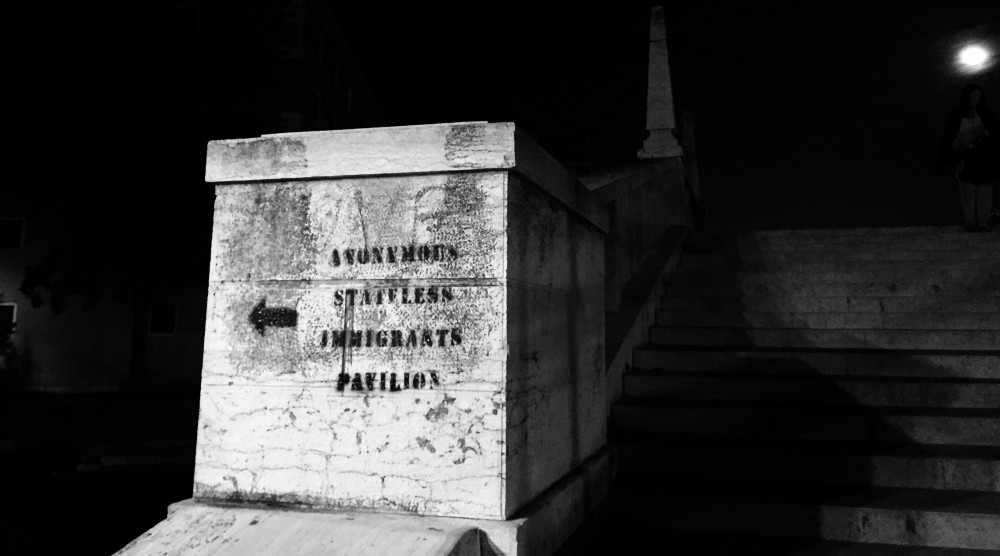Performance ‘Where is Stammheim?’ With work of Olaf Metzel in the garden of Wuttembergischen Kunstverein Stuttgart. This performance happend during the building up of “Hinterland” After “Stage for Tragedy”.
About:
Where is Stammheim (1)? Or where is Stamm Heim (2)? Where is home? Where is the prison? Where is exile? Are you home in exile? Can you feel home in prison? Can prison become home? Does a shelter, a place to refugee still exist? Where are the boarders of prison? How can you escape that prison? And where would you go after crossing the boarders of that prison? The last question reminds me of the moment when Truman touches the walls horizon in the end of the sea.
____
- Stammheim is a maximum-security prison in Stuttgart, Baden Wuttemberg, Germany. An extra secure part was added to the jail to confine the Red Army Faction leaders as well as trial courthouse. The prison is where the “Dead Night” happened. A night when four leading members of Red Army Faction committed successful suicide, accept the fourth member Irmgard Möller who survived her suicide attempt. She stated that the deaths where no suicide but rather undertaken by the German government.
2. Stamm means tripe and Heim means home in German. Although the combination of words in such order and with space in between is not used in German language.
Where is Stammheim? from Ehsan Fardjadniya on Vimeo.

Related Article: ‘The Built Environment and Carcerality‘ by Egbert Alejandro Martina. Quote:
“Mi mama no tin plaka My mother doesn’t have any money
Hinka mi den un doshi Put me in a box
Manda mi na Hulanda (And) sent me to the Netherlands
Ora mi a yega Hulanda When I arrived in the Netherlands<break>
An old Curaçaoan children’s song”













